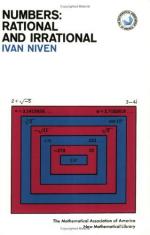|
This section contains 346 words (approx. 2 pages at 300 words per page) |
A number in the form of a ratio a/b, where a and b are integers, and b is not equal to 0, is called a rational number. The rational numbers are a subset of the real numbers, and every rational number can be expressed as a fraction or as a decimal form that either terminates or repeats. Conversely, every decimal expansion that either terminates or repeats represents a rational number.
Rational numbers can be written in several different forms using equivalent fractions. For example,  . There are an infinite number of ways to write 1, ¼ or
. There are an infinite number of ways to write 1, ¼ or  by multiplying both the numerator and denominator by the same nonzero integer. Therefore, there are an infinite number of ways to write every rational number in terms of its equivalent fraction.
by multiplying both the numerator and denominator by the same nonzero integer. Therefore, there are an infinite number of ways to write every rational number in terms of its equivalent fraction.
The following example shows how to find the ratio of integers that represents a repeating decimal.

One way to compare two rational numbers is to convert them into a decimal form. Dividing the numerator by the denominator results in the decimal equivalent. If the division has no remainder, then the decimal is called a terminating decimal. For example, ½ = 0.5,  , and
, and  .
.
Although some decimals do not terminate, they do repeat because at some point a digit, or group of digits, repeats in a regular fashion. Examples of repeating decimals are ⅓ = 0.333…, , and
, and  . A bar written over the digits or group of digits that repeat shows that the decimal is repeating:
. A bar written over the digits or group of digits that repeat shows that the decimal is repeating:  , and
, and 
 .
.
Properties of Rational Numbers
Rational numbers satisfy the following properties.
- Given two rational numbers x and y, there are three possibilities: x is equal to y, or x is less than y, or x is greater than y.
- The sum of two rational numbers is another rational number.
- The product of two rational numbers is another rational number.
- Except for 0, the reciprocal (multiplicative inverse) of every rational number is also a rational number.
See Also
Integers; Numbers, Irrational; Numbers, Real; Numbers, Whole.
Bibliography
Amdahl, Kenn, and Jim Loats. Algebra Unplugged. Broomfield, CO: Clearwater Publishing Co., 1995.
Miller, Charles D., Vern E. Heeren, and E. John Hornsby, Jr. Mathematical Ideas, 9th ed. Boston: Addison-Wesley, 2001.
|
This section contains 346 words (approx. 2 pages at 300 words per page) |


